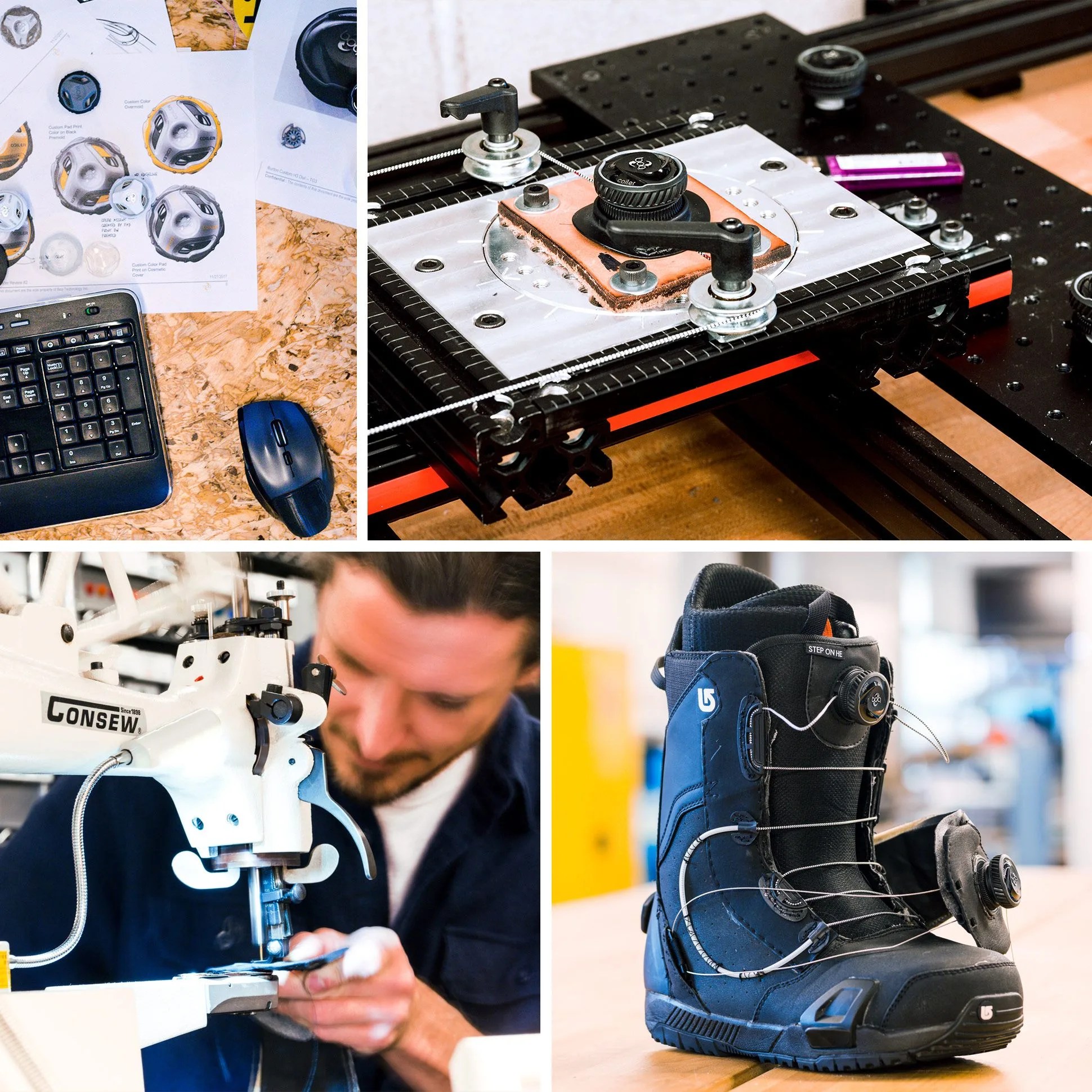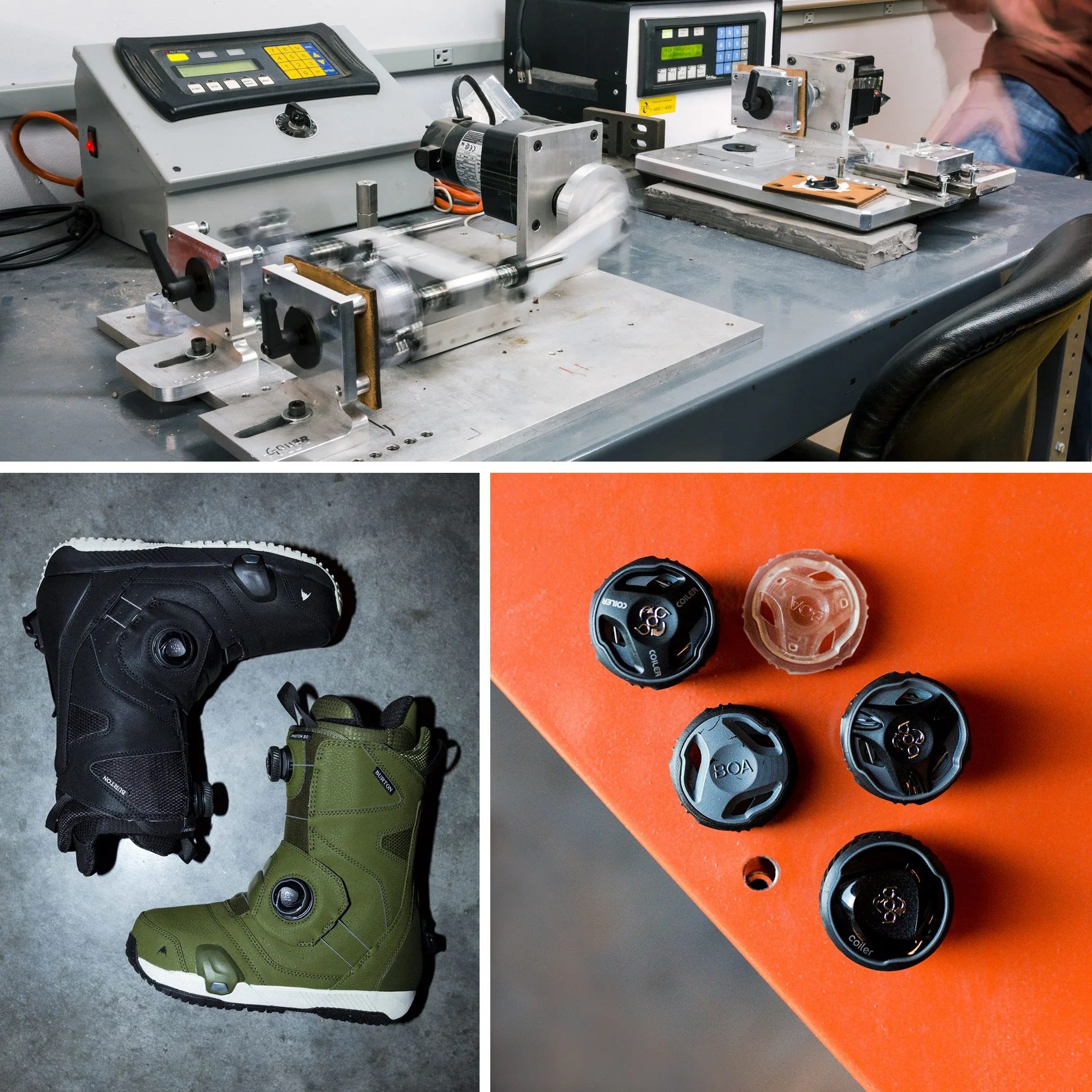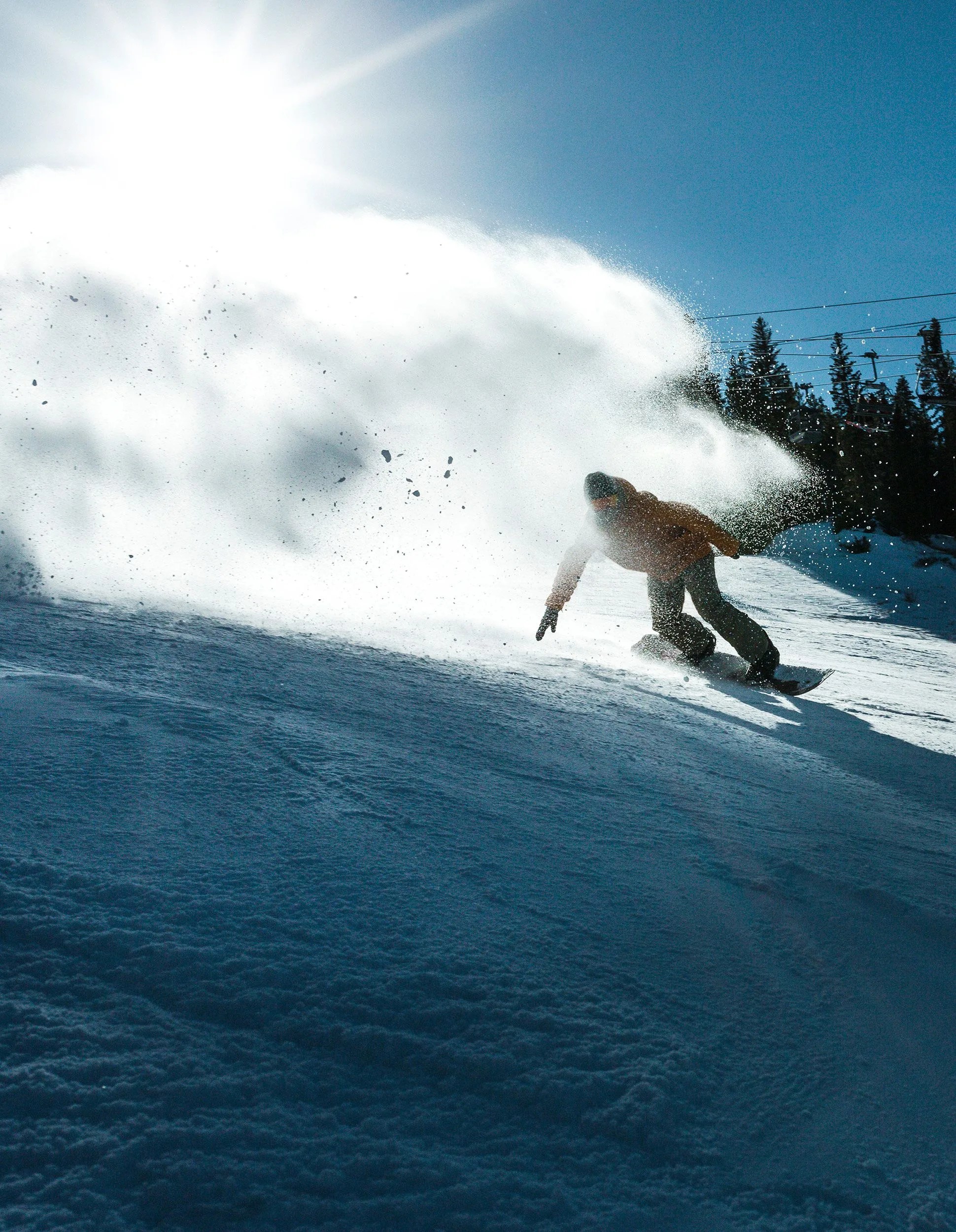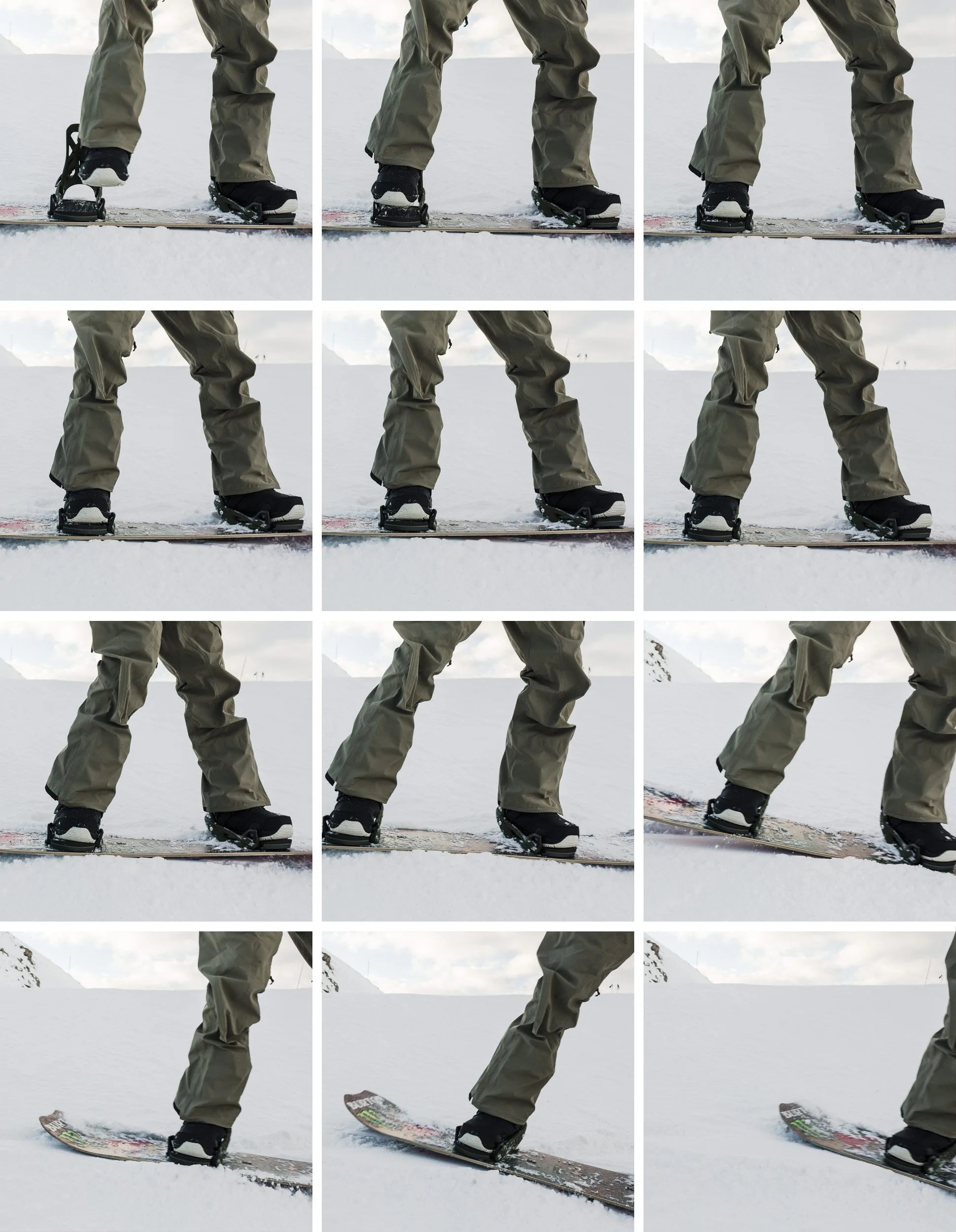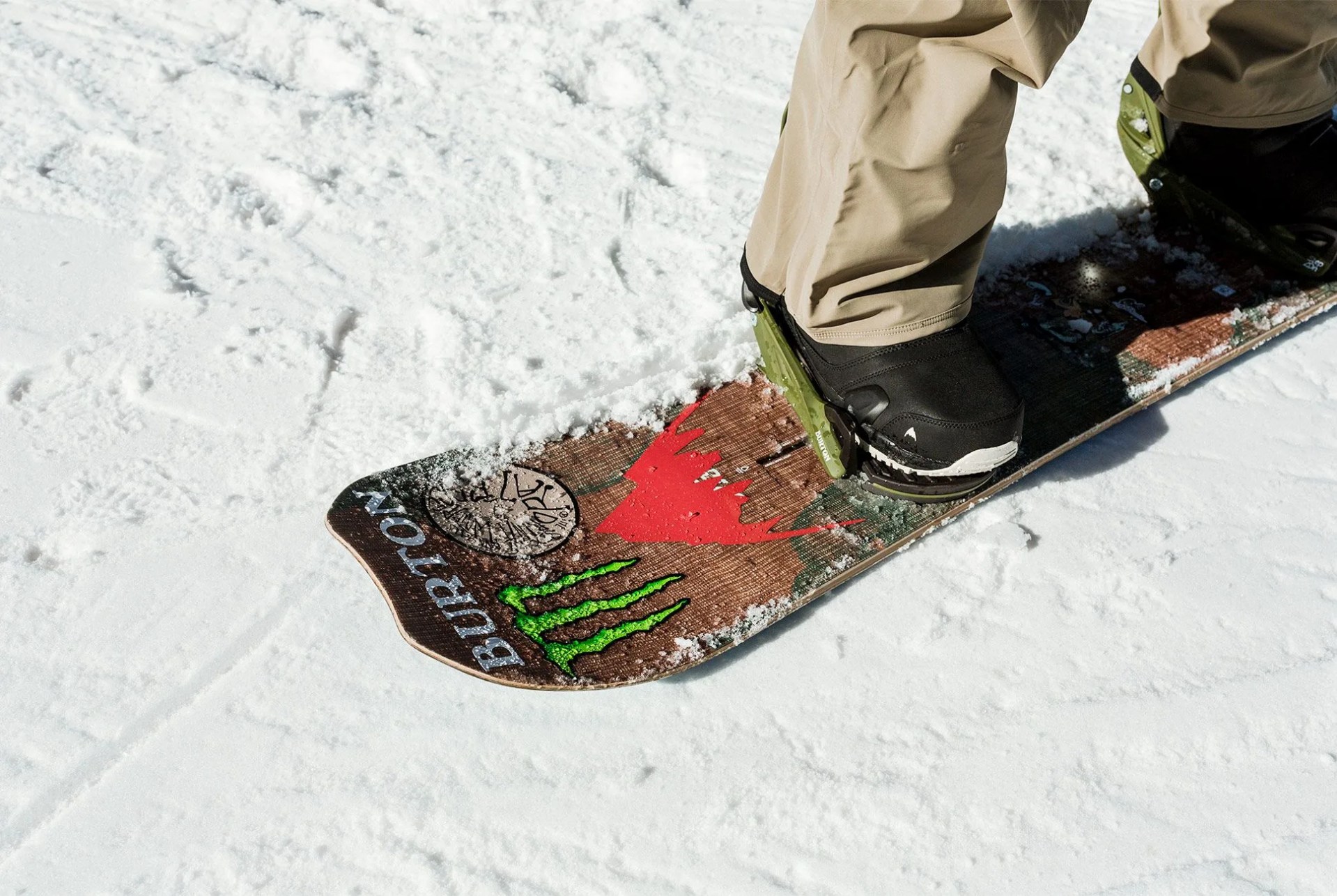
Snowboard boots simply cannot be discussed at any length without mentioning the Boa Closure System. Its replacement to traditional laces — a system combining a micro-adjustable dial, tough yet lightweight laces and low-friction lace guides — can easily be referred to as the single greatest technological advancement in snowboard boots without much argument. The first commercially available boots with Boa dials debuted in the winter of 2001, and have become ubiquitous since. Replacing the cumbersome (and frankly painful) traditional laces found on most snowboard boots with the dial-based tension system not only made it remarkably easy to get your boots on and off, but it also allowed users to easily adjust the tension of their boot throughout the day, a necessity for snowboarders, whose feet swell as the day goes on.
Some would have stopped there, opting to sell the technology to a larger brand or license the company’s countless patents to other outfits looking to develop similar technologies — but that’s not the route Boa took. Gary Hammerslag, its founder, had other plans. The brand continued to innovate and improve its technology, expanding into other categories — and evolving from two guys at a card table stitching things by hand, to a state of the art facility in Denver’s RiNo district in the process: a sizeable, ultra-modern space embedded with amenities such as a ground-level Brooklyn-worthy cafe that refuses to serve milk with your coffee alongside prototyping machines that even the most high-tech outdoor brands would lust over. But Boa still keeps the do-it-by-hand mentality — a quality that adds to its ability to stay nimble when working with partners. Initial prototyping can happen quickly in-house in a vast area just beyond the reception desk and main conference room. Despite ample room for testing and prototyping, Boa continues to grow and expand — so quickly in fact that the brand’s current office space has been outgrown in a matter of four years. Boa is in the process of building a new facility, just down the road from its current one, filled with testing and prototyping equipment (and, fingers crossed, perhaps a coffee shop that serves milk if you’re inclined to ask for it).
2 photos
The single dial was just the beginning at Boa. The company pushed beyond the single dial, developing a dual-dial system that allows for two different tension zones and companies across every market of the outdoor industry wanted to work with Boa. The technology now appears on everything from cycling shoes, to helmets for all sports, medical equipment and even military gear. The brand’s commitment to growth and innovation has, perhaps, never been stronger than it is today. In a matter of hours, and sometimes even minutes, Boa can mock up and test a completely new product — thanks in no small part to an array of 3D printers, torture testing rigs and sewing machines. Boa even has its own cable and rope braiding machine (which is quarantined in its own room due to the noise it generates) where different types and combinations of materials and like Dyneema and nylon can be tested.
For Boa though, only so much innovation can happen in-house. It depends heavily on its partners to work cooperatively on ideas outside the box. But to be the most effective, Boa needs to be brought in early to the product design phase. “We’re starting earlier in the process now with some of our key brands,” said Boa’s Director of Research and Product Strategy Brett Vladika. “If you just put Boa on as a lace replacement, all you’re going to get is the replacement of a lace. [The] configurations — where you put the dial, where you put the lace, how you organize the lace going through the guides, how you are positioning all of that — we can program fit.” And fit is what Boa is best known for. Perhaps the best example of Boa’s dedication to innovation, fit and working with a client early in the process to push the limits is in its partnership with Burton Snowboards.
Five years ago, Burton began developing a product aimed at disrupting how snowboard boots interface with snowboard bindings (and in many ways, the snowboard marketplace as a whole). It was a ground-up development process that threw every preconceived notion of snowboard boots and bindings out the window. The project was top secret — there was a sealed off room in Burton’s Burlington Vermont headquarters dedicated to the endeavor. Those employees who were enlisted to work on the project were sworn to secrecy, unable to discuss it even with family members and significant others. The project was Burton’s new Step On system, and Boa was a natural partner for the project. Burton brought Boa in roughly three years ago, to help shepherd the project to completion and fine-tune fit and performance. Like the Burton employees, Boa’s team was also sworn to secrecy. For Boa, working with Burton brings the brand full circle — Burton was one of the first brands that Hammerslag initially sought to work with in the company’s early days. “It’s not about working with every brand,” said Boa’s Global Snowboard Lead & Sr. Account Manager Jeffery “Woody” Woodward. “We really want to work with the premium brands, the brands that are pushing technology in the market itself.” For Woodward, Burton certainly falls into that category.

